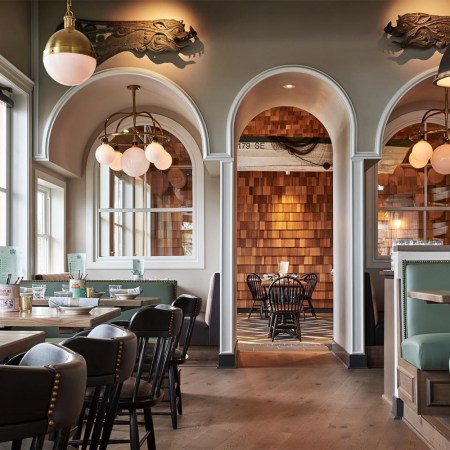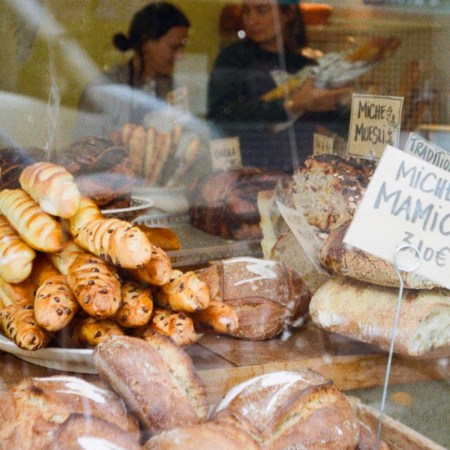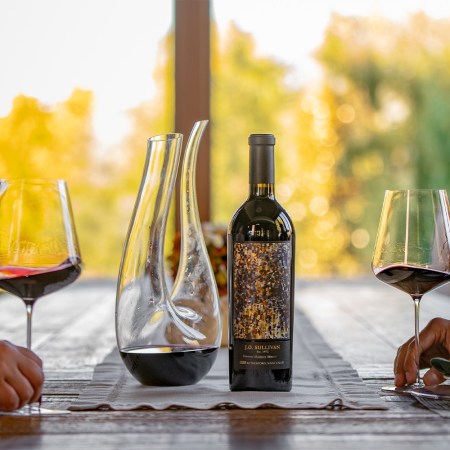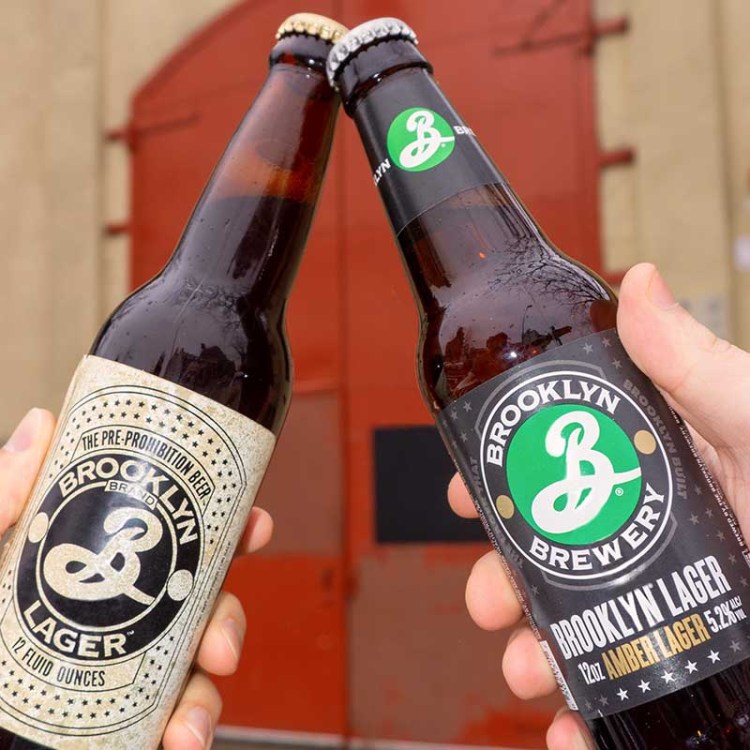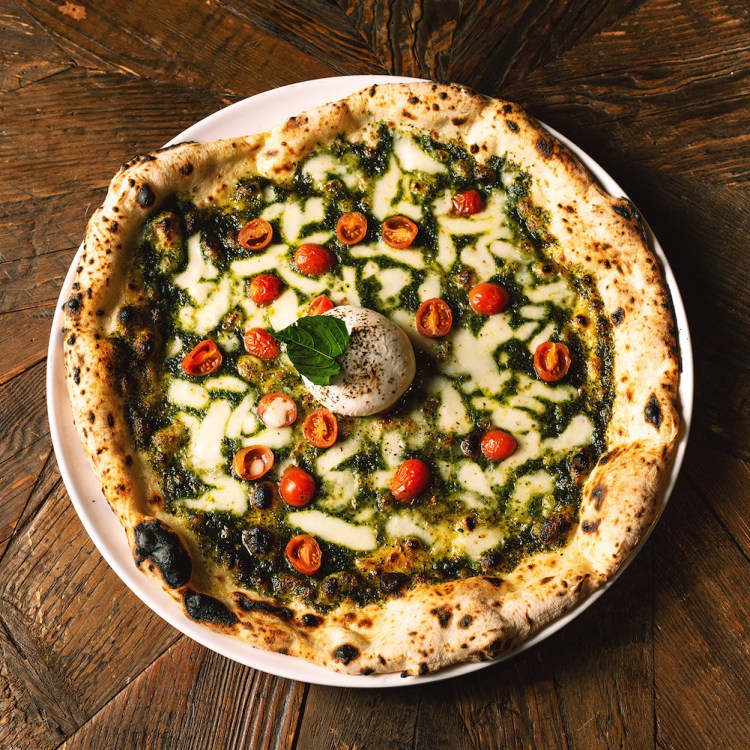On the stainless steel countertop of Sobre Masa’s Williamsburg kitchen, a woman kneads a large lump of what looks like pale blue clay. In a way, that’s what it is: a colorful, moldable mass. The difference is what it’s made from: some very special heirloom corn. In the right hands, that magical dough, called masa, can be shaped and pressed to provide a foundation for an unimaginable range of tasty Mexican dishes.
At Sobre Masa that potential is realized to the utmost extent, as owners Zach Wangeman and Diana Montano call upon their Oaxacan roots and connections to source some of the most unique corn varieties from small producers, then use it to produce tortillas from scratch in Brooklyn. Hues of pink, blue, yellow and white all find their place there, bringing a spectrum of color and flavor that many don’t associate with tortillas. It only makes sense that Montano would be a pioneer in this way. For her, corn has been a way of life, not just a simple ingredient.
“The Zapotecs are one of the most ancient communities in Oaxaca,” she says. “We have always been using corn — it’s the main ingredient in all of our dishes. We use corn in drinks, in masa, in food. When you finish peeling all the corn you get to the olote (the Nahuatl word for corncob). When it dries out they burn that part of the corn with wood to make fire. Every part of the corn is used in my town, and I remember as a kid helping to build those fires with my grandma, or going with my mom to the molino, where we would mill our corn, feel the texture of the masa, and then head home to start prepping tamales.”
Despite growing up closely around the nixtamalization process and the restaurant industry (her parents own a successful restaurant in Oaxaca), Montano actually ended up pursuing a medical career. She had just graduated from medical school when Wangeman asked if she might want to come help him establish Sobre Masa in New York. Friends since childhood, Montano made the decision to come see what she could do to lend him a hand. That was two years ago. Since then, the two have opened two locations, including a new Bushwick tortilleria. They’re also now happily married.

Purpose and product
Since taking the leap, Montano and Wangeman have been working toward shifting the narrative around what “Mexican food” is considered to New Yorkers. Wangeman tells us that he hopes one day more people realize that there are endless amount of variety to be found within the hyperlocal cuisines from Oaxaca alone.
Wangeman also shared that what he isn’t looking to do is create the perfect tortilla — because it doesn’t exist.
“I think with a tortilla in particular, it was very hard because at first we were kind of looking for what that perfect tortilla recipe is. It didn’t really take long to discover that there is no such thing, because the perfect tortilla means so many different things to so many different people.”
“In Oaxaca they have a very saucy cuisine, so the tortilla has a little bit more of a chew to it and tends to be on the drier side. In Mexico City, their tortillas have more calcium hydroxide because it’s a preservative, and if you’re on the street in the heat pressing masa with no refrigeration, you need to add more of that to be able to get the shelf life. Now, there’s a whole generation that prefers that flavor. So, for us here, we know how people in Oaxaca like their tortillas and how people in Mexico City like their tortillas, but how do people in New York like their tortillas? That’s something that we’re still discovering now.”
With that being said, the duo’s current goal for Sobre Masa now goes beyond the constraints of “perfection” and instead aims straight for the heart.
“All the food we make, we actually just cook out of nostalgia. We make what we miss eating.”
For a taste of their heirloom corn and its accompanying nostalgia, visitors can head straight to the source in Bushwick. There, they’ll find a small industrial space where bags upon bags of kernels are nixtamalized, milled, kneaded and finally pressed into tortillas. The space serves as a one-stop shop, with a dining room and bar in the back, and a curated grocery and cafe in the front.
For those who want to take it a step further, raw masa is available for purchase, and ready for your kitchen at home. Wangeman says there’s absolutely nothing better than a fresh tortilla hot off the stovetop, and after having a taste for ourselves, we can’t disagree.

Making tortillas at-home
Before embarking on your homemade tortilla journey, make sure you have the right tools. The most important tool is undoubtedly a tortilla press, which is available to purchase at most culinary stores like Sur la Table, Williams Sonoma or Food52. You can even find one on Amazon for a cool 20 bucks.
Once you’ve secured your tortilla press, all you really need is your masa, a cast iron pan and a hot stovetop. Masa is dough made from nixtamalized corn flour, also called masa harina, and can be purchased at Sobre Masa for five dollars per pound. If you’re unable to make your way over to Sobre Masa, you can also purchase masa harina from the grocery store and create your own dough. Be sure that the product is labeled as corn flour, rather than cornmeal or cornstarch (not the same thing!).
Whether purchasing pre-made masa or constituting it yourself, give it a good kneading to make sure the ingredients are well-incorporated. Begin to pinch pieces of dough away from the larger mass until it resembles the size of a golf ball. This amount of masa will yield you one tortilla that is roughly six inches. Wangeman emphasizes that this is an important step in the tortilla-making process, as you’re injecting fresh oxygen into the dough as you roll the ball in your hands.
Open up your tortilla press and line it with two small sheets of parchment paper. Once you’re done rolling your masa ball, plop it right in the middle of those two sheets of paper, and give it a firm, even press. Flip and press once again. Meanwhile, begin to heat up your cast iron on medium-high heat.
Flip the tortilla into your hand and place it gently onto your hot cast iron. As it starts to heat up make sure to pay very close attention, as Wangeman says that the first flip is the most important. You’ll notice that the color of the tortilla will begin to shift, and its corners will lift from the pan. That is your sign that the tortilla is ready to flip, and it only takes around 30 seconds to one minute to reach this stage.
Allow the tortilla to cook on the opposite side for the same amount of time before flipping for the third and final time. If the conditions are right and the tortilla has been cooked correctly, you’ll see it begin to puff up after that final flip. The “puff” is an indication that steam has entered the tortilla and is cooking the inside. Once you begin to notice a nice aroma and brown spots dotting the tortilla, it’s time to take off the stove and inhale it. If you plan on making a large batch, you can keep the tortillas warm inside a tortilla sleeve or towel as you go about your business.
This article was featured in the InsideHook NY newsletter. Sign up now for more from all five boroughs.

